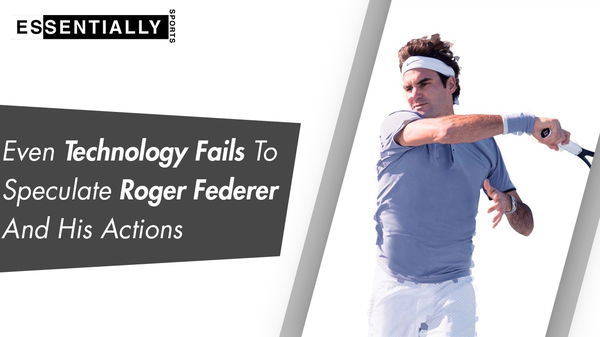

As Novak Djokovic increased the major count by one in the Big Three’s account at the Australian Open 2019, few scientist and researchers have closely observed the gameplay of Roger Federer, Rafael Nadal and Djokovic during the Melbourne major. They have developed an intelligent algorithm which prophesies the next shot in the match which the players will play. The research team focused their analysis solely on Djokovic, Nadal and Roger Federer and studied their shot selection. Interestingly, their study reflected how the shot selection of these players varied with the progress in the tournament. The researchers from the Queensland University of Technology in Australia developed an algorithm for predicting the next shot in tennis with the help of the Hawk-Eye data from the Australia Open 2012, provided by Tennis Australia.

via Imago
Roger Federer
They analysed about 1900 shots for Roger Federer, 3400 shots by Djokovic and 3500 shots for Nadal and also mentioned whether the shot played was a return, a winner or an error. The algorithm is quite accurate and grasps the player’s style of playing after about 1000 shots. The model studies about three matches played by a player and post that it starts working favourably. The Senior Research Fellow, Dr Simon Denman revealed the domain of computer science emphasising on the creation of intelligent machines which is the artificial intelligence. The algorithm imitates the brains of the players, who are themselves involved in predicting their opponent’s next move.
ADVERTISEMENT
Article continues below this ad
The results obtained from the algorithm were quite similar to the movement of the players on the court. However, even the technology failed to speculate what Federer’s actions on the court were. “We had an analysis of how accurate it is for those three top players – Djokovic, Nadal and Federer,” Dr Denman said. “And it was least accurate for Federer, who is perhaps the most versatile. It struggled the most to predict him. He can do anything, so the model was more often wrong about him”.

via Imago
Roger Federer
When a point is being played, the machine learning system comes into play, the shot selection by the player is different when he/she is serving for the first set with a 40-love up score than the shots which they strike while struggling to stay in the match during the fifth set. To treat the model like a player’s brain the researchers have created two forms of memory, the episodic one and the semantic memory. The episodic one deals with recalling each stroke and analysing it. The semantic memory is conceptual, which practises the outcomes from the episodic memory. The two memory work hand in hand with an input stimulus. The episodic memory would declare the perfect place to hit the ball and the semantic memory would go ahead to slam the ball on that particular portion of the court.
Within ten years of time, the tennis players will be able to study the game of their next opponent using this technology. This system can predict the tactics of a player during the break-point and also how the decisions of the players change at different stages of a match.
ADVERTISEMENT
ADVERTISEMENT
ADVERTISEMENT
ADVERTISEMENT

